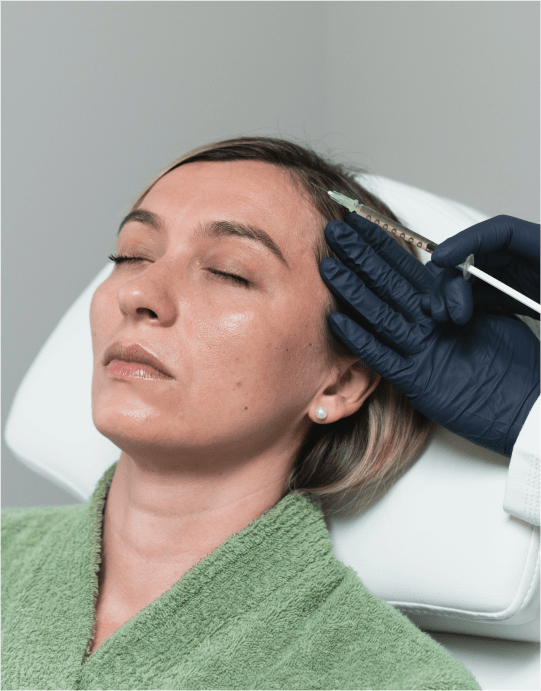What is PRP hair restoration?

Platelet Rich Plasma Therapy (PRP)
PRP is a substance that is extracted from your blood, using a centrifuge type device to separate it from the blood, and is then injected into the skin where treatment is required. PRP scalp treatment is therefore one of the less invasive of hair replacement treatments available today.Studies have shown that PRP can promote healing within the body’s tissues, including hair follicles, as it is rich in the proteins that trigger healing systems. While we are looking at hair restoration, it is important to remember that this healing effect is useful in a number of ways, and using PRP for skin problems is another adaptation of the same technology.
Plasma treatment like this can be used as an anti-aging treatment, with its promotion of cell rejuvenation in the body leading to skin rejuvenation. For patients asking how to smooth acne scars, PRP Microneedling can be an effective solution, over time diminishing and even eliminating acne scars.
In addition, PRP has been used by doctors to help treat tendon, muscle and ligament damage, and is becoming a common approach to aiding recovery from sports injuries as a result.
Is using Plasma Treatment for hair loss effective?
The platelets in PRP are part of the body’s own healing system. If you cut your finger by accident for instance, the body sends platelets to the area of the wound, acting to stop the bleeding and promote healing. Once extracted from the blood, PRP has a very high platelet content, so is rich with proteins that promote healing.
It is injected directly into the affected area, and proceeds to do exactly what it is designed to do, seek out damaged cells and promote healing. With plasma treatment for hair loss, those platelets will find the damaged hair follicles that are the cause of the problem, and begin to restore them. Over time, as the follicles are repaired, hair growth will return.
There have been a number of scientific studies looking at a range of treatments using PRP, from skin care problems to the wide range of PRP scalp treatments designed to combat hair loss. These studies were collated by scientific journal Aesthetic Plastic Surgery, and showed that for most patients suffering from androgenetic alopecia, PRP delivered a reduction in hair loss, and an increase in hair density, with thicker hairs signifying stronger, healthier follicles.
That is not the only study to show that PRP treatment is effective. Others come to similar conclusions, noting that for sufferers of alopecia of various types, it is a particularly effective approach.
How does the treatment work?
A plasma treatment for hair loss session involved blood extraction, centrifugal extraction of the PRP, and an injection into the area to be treated. It usually takes about an hour, and with no side effects or anesthetic required, the patient can usually go straight back to their regular day. This is very different to alternative hair restoration treatments, with some requiring surgical operations.
Depending on the severity of the hair loss and other factors, several treatments may be needed over time to maintain the new growth, as PRP is not in itself a cure for the underlying cause of that hair follicle damage.
You can expect to need additional treatments every 3 to 6 months to maintain hair regrowth. That is why during your consultation with our expert don’t forget to ask for a prices for PRP packages!
The ideal hair rejuvenation treatment?
With science backing the process, and a track record of success with the treatment, you can have confidence in plasma treatment for hair loss. With its ability to aid in other issues such as acne scars, sports injuries and so on, there is no doubt that PRP treatment is a valuable addition to treating a range of problems.
PRP scalp treatment is fast and easily fitted into your life, talk to us today about hair rejuvenation through plasma treatment.

